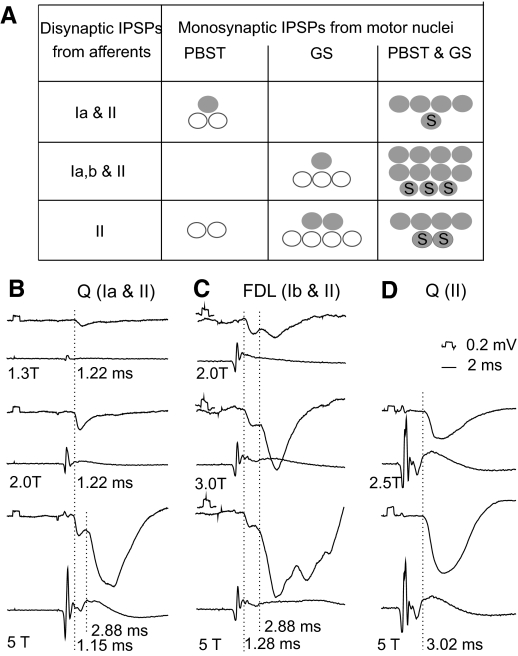Fig. 9.
Relationships between sources of inhibitory afferent input to VSCT neurons and the origin of monosynaptic IPSPs from motor nuclei. A: proportions of VSCT and SB neurons in which monosynaptc IPSPs (at latencies ≤1.4 ms) were evoked from within GS and/or PBST motor nuclei. The data are grouped for neurons in which IPSPs were evoked from lowest threshold (group Ia) afferents without or with group II afferents (n = 8, all from Q), the whole range of group I afferents (most likely group Ia and Ib) and group II afferents (n = 15 most often from extensors Q, GS, FDL, Pl but also from Sart, PBST, and DP), or from only group II afferents of any of the tested nerves (n = 14). Filled circles are for neurons in which monosynaptic IPSPs were evoked from PBST only, from GS only, or from both PBST and GS motor nuclei. Open circles are for neurons in which monosynaptic IPSPs were evoked from only one of the indicated nuclei but for which it could not be excluded that they were likewise evoked from the other nucleus (see text). Circles with “S” are for spinal border neurons. B–D: examples of IPSPs evoked from group Ia and group II afferents, group I and group II afferents, and only group II afferents of the dissected nerves and afferent volleys recorded from the cord dorsum. The nerves of origin are indicated above and stimulus intensities below the records. Dotted lines indicate onset of the IPSPs and the figures to the right of these lines their latencies with respect to the volleys.

